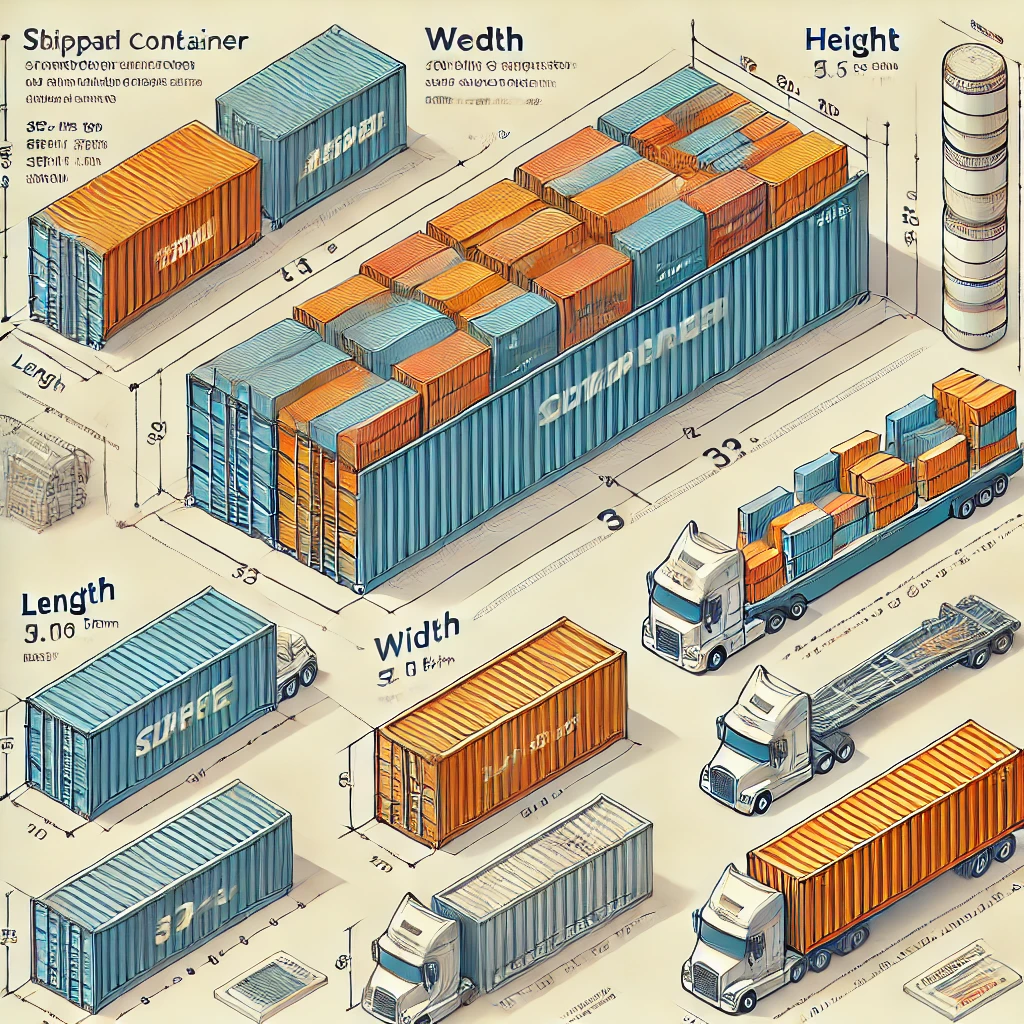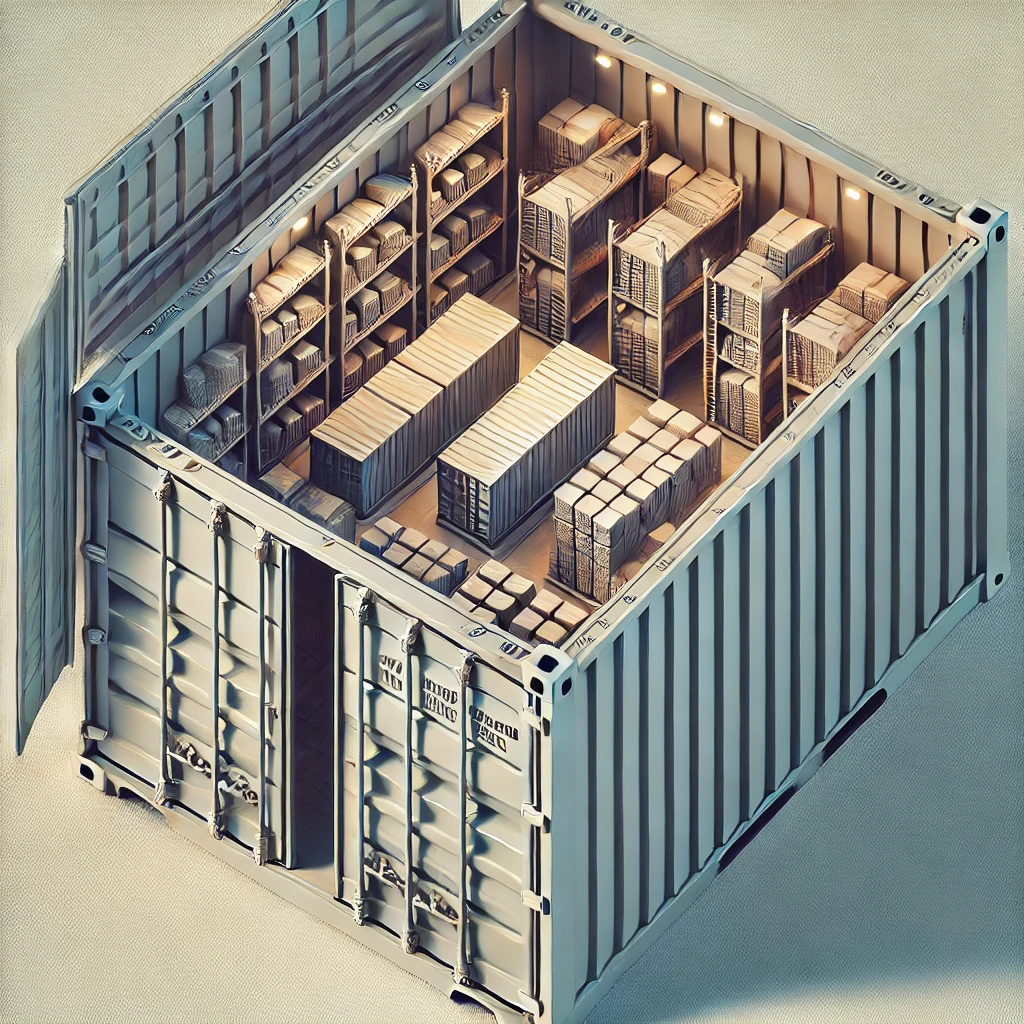An In-Depth Guide to Shipping Container Measurements
This guide provides a detailed breakdown of shipping container measurements, highlighting key sizes, types, and practical applications in modern shipping.

Standard Shipping Container Sizes and Dimensions
Shipping containers come in various sizes, but the most commonly used standard dimensions are based on ISO (International Organization for Standardization) specifications.
1. 20-Foot Shipping Container
- External Dimensions: 20 ft (L) × 8 ft (W) × 8 ft 6 in (H)
- Internal Dimensions: 19 ft 4 in (L) × 7 ft 8 in (W) × 7 ft 10 in (H)
- Volume Capacity: 33.2 cubic meters (1,172 cubic feet)
- Max Gross Weight: 24,000 kg (52,910 lbs)
Best Used For:
✅ Small businesses and personal shipments
✅ Heavy cargo (machinery, equipment, raw materials)
✅ Construction site storage
2. 40-Foot Shipping Container
- External Dimensions: 40 ft (L) × 8 ft (W) × 8 ft 6 in (H)
- Internal Dimensions: 39 ft 5 in (L) × 7 ft 8 in (W) × 7 ft 10 in (H)
- Volume Capacity: 67.7 cubic meters (2,390 cubic feet)
- Max Gross Weight: 30,480 kg (67,200 lbs)
Best Used For:
✅ Large-scale commercial shipments
✅ Long-term warehouse storage
✅ Furniture and household goods
3. 40-Foot High Cube Container
- External Dimensions: 40 ft (L) × 8 ft (W) × 9 ft 6 in (H)
- Internal Dimensions: 39 ft 5 in (L) × 7 ft 8 in (W) × 8 ft 10 in (H)
- Volume Capacity: 76.4 cubic meters (2,700 cubic feet)
- Max Gross Weight: 30,480 kg (67,200 lbs)
Best Used For:
✅ Extra-large cargo needing additional height
✅ Industrial and manufacturing equipment
✅ Bulk consumer goods
4. 45-Foot High Cube Container
- External Dimensions: 45 ft (L) × 8 ft (W) × 9 ft 6 in (H)
- Internal Dimensions: 44 ft 5 in (L) × 7 ft 8 in (W) × 8 ft 10 in (H)
- Volume Capacity: 85.9 cubic meters (3,000 cubic feet)
- Max Gross Weight: 32,500 kg (71,650 lbs)
Best Used For:
✅ Large retail shipments
✅ Oversized cargo requiring more volume
✅ E-commerce fulfillment centers

Specialized Shipping Containers and Their Dimensions
Container Type | External Dimensions | Purpose |
Refrigerated (Reefer) Container | 20ft & 40ft options | Temperature-controlled cargo (food, medicine) |
Open-Top Container | 20ft & 40ft options | Tall machinery and oversized goods |
Flat Rack Container | 20ft & 40ft options | Vehicles, construction materials, large pipes |
Tank Container | 20ft standard size | Liquid cargo (chemicals, fuel, edible oils) |
Double-Door Container | 20ft & 40ft options | Easy loading/unloading from both ends |
Side-Opening Container | 20ft & 40ft options | Large cargo requiring side access |
How to Choose the Right Shipping Container Size
✅ 1. Consider Your Cargo Volume & Weight
- Light but bulky goods → 40ft High Cube
- Heavy equipment → 20ft Standard
✅ 2. Evaluate Transportation & Handling Needs
- Need easy loading? → Side-Opening Container
- Need refrigeration? → Reefer Container
✅ 3. Determine Cost vs. Efficiency
- 20ft containers are cheaper but carry less cargo
- 40ft containers provide better cost per cubic foot

Importance of Shipping Container Measurements in Logistics
1. Optimizing Freight Costs
- Choosing the right container size reduces wasted space.
- Helps businesses avoid overpaying for unused volume.
2. Regulatory Compliance & Standardization
- ISO-standard dimensions ensure compatibility across global ports.
- Prevents shipping delays due to non-standard container sizes.
3. Efficient Cargo Loading & Transport Planning
- Helps logistics teams calculate stacking & weight distribution.
- Ensures safe and secure handling during shipping.
Advantages and Challenges of Different Container Sizes
Container Type | Advantages | Challenges |
20ft Standard | Lower cost, easier transport | Limited cargo space |
40ft Standard | Best for cost-efficiency | Higher weight limits needed |
High Cube (40ft, 45ft) | Extra storage space | Higher transport costs |
Reefer (Refrigerated) | Temperature-controlled | More expensive & limited availability |
Flat Rack | Ideal for oversized goods | Requires specialized transport |

When to Use Different Container Sizes?
- Best for small shipments → 20ft container
- Best for bulk cargo & long-haul shipping → 40ft container
- Best for temperature-sensitive goods → Refrigerated (Reefer) container
- Best for oversized machinery & vehicles → Flat rack or open-top container
Conclusion
Understanding shipping container measurements is essential for businesses, freight forwarders, and logistics professionals to optimize cargo space, reduce costs, and ensure efficient transport operations.
By choosing the right container size, businesses can improve supply chain efficiency, minimize transportation expenses, and ensure seamless global shipping. Whether you are shipping small goods, heavy machinery, or temperature-sensitive cargo, selecting the correct container type and dimensions will enhance your logistics operations.
